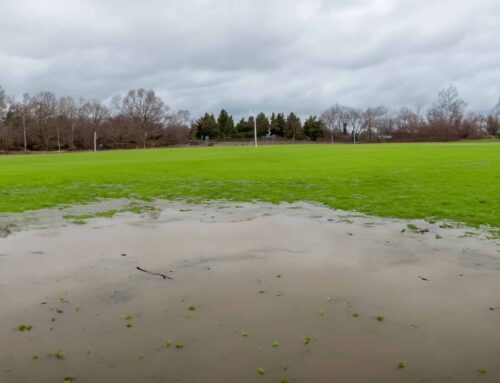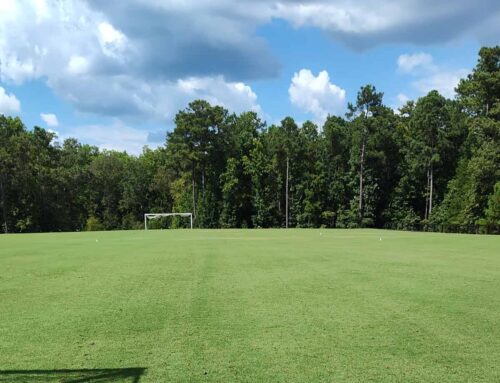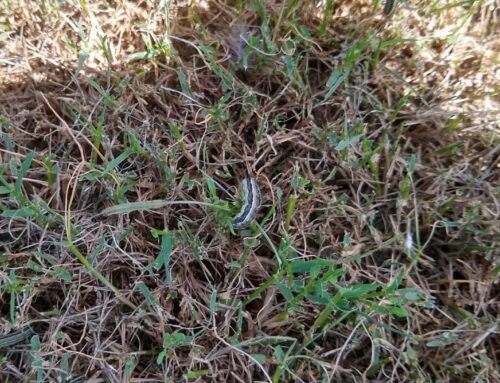Preparing Your Landscape for Cooler Temperatures: Essential Tips for Fall
As fall approaches in LaGrange, Georgia, it’s time to shift focus from summer maintenance to preparing your landscape for the cooler months. For facility managers, homeowners, and business owners, this seasonal transition is key to ensuring your lawns and plants remain healthy and vibrant through the winter. At LaGrange Landscape, we’ve spent over 45 years perfecting the art of seasonal transitions, and today we’re sharing our top fall landscape maintenance tips.
1. Leaf Management: Don’t Let Leaves Suffocate Your Lawn
Falling leaves may be a hallmark of autumn, but they can wreak havoc on your lawn if not properly managed. Thick layers of leaves block sunlight and trap moisture, creating ideal conditions for winterkill.
What You Can Do:
Rake or mulch leaves regularly: Removing leaves prevents them from smothering your grass. Mulching them with a mower can also provide valuable organic material for the soil.
Compost: If possible, compost the leaves. This can turn them into nutrient-rich material that benefits your landscape in the future. Never compost leaves from diseased trees as this can spread diseases into new hosts.
Mulch landscape beds: Many of our beneficial insects spend their winters hiding under leaf litter as larva, using the leaves as mulch gives them somewhere to hide and emerge in the spring ready to help control pests. This also cuts down on the amount of mulch needed as well as improving the soil as the leaves breakdown into topsoil.
2. Adjusting Irrigation: Water Just Enough
As temperatures drop, your lawn and plants will need less water than during the hot Georgia summer. However, don’t make the mistake of cutting off irrigation too soon—plants still need hydration to stay healthy through winter.
Best Practices:
- Reduce watering frequency: Decrease the amount of watering, especially during cooler weeks when plants need less. A deep watering once a week should be sufficient during the fall.
- Irrigation shutoff: If nighttime temperatures drop near freezing, be sure to properly shut down your irrigation system to avoid damage. This involves shutting off the water at the source and turning the controller to the “off” setting. Do not unplug the controller as this will require reprogramming the controller in the spring.
3. Prepping Your Lawn for Winter:
Fall is the perfect time to prepare your lawn for winter dormancy and set it up for strong growth in spring.
Steps to Take:
- Fertilize: Applying a slow-release fertilizer with a focus on potassium will help strengthen your lawn as it heads into dormancy. There have been recent studies showing that applying slow-release nitrogen in late summer/early fall may help with spring green up. However, if you are using a fertilizer with preemergent then something like a 5-5-25 is advised.
- Mow one last time: Keep your lawn healthy by mowing it at a slightly higher height (a half inch higher) for the last cut of the season, preventing weeds from taking over. If you plan to mulch your leaves, have your mower at the same height or slightly above the final cut of the season to prevent accidental scalping.
- Apply Preemergent: Apply a preemergent for winter weeds. This should be done by the end of October for best results.
4. Planting for Fall and Winter Interest
Fall is an excellent time for planting trees and shrubs in LaGrange. The cooler temperatures create ideal conditions for root establishment before winter sets in. Fall is actually drier here, especially October when we go weeks without rain. The rainfall totals for September and October tend to be skewed by tropical storms (September this year had 14.46” of rain but that was due to Helene dumping 12.62” of rain from the 25th to the 28th).
Recommendations:
- Plant spring-blooming bulbs: Fall is the perfect time to plant bulbs like daffodils, hyacinths, tulips, and crocuses for a vibrant spring display.
- Plant seasonal color: Pansies and violas will provide blooms when most plants are going dormant as well as giving you color in the spring when it’s still too cold for summer annuals. If you have deer then you will need to use some sort of deterrent (netting, electric fence, or repellent) as deer love pansies and violas. Dianthus and snapdragons will occasionally bloom during the fall then explode with blooms in the spring. Deer do not tend to feed on dianthus or snapdragons.
- Shrubs and perennials: when selecting plants try to remember the sunlight conditions from the summer. Just because it is a sunny area when the leaves are falling doesn’t necessarily mean the area will be sunny during the summer. Having a mixture of evergreen plants and deciduous shrubs helps give year-round interest to your yard. Flowering plants like camellias, lenten roses (Helleborus), daphne, edgeworthia, forsythia, quince, and native witch-hazels will give you splashes of color during the fall and winter to help brighten those gloomy cloudy days.
- Trees: prepare next year’s leaf change by planting trees with vibrant fall color. Some trees can even provide winter interest with peeling bark or bark that has naturally occurring colors. Examples of vibrant fall color are blackgums, dogwoods, ginkgos, maples, oaks, and sourwoods. For interesting barks try beeches, birches, taller crape myrtles, and some maples.
5. Hardscaping Maintenance
Don’t forget about your hardscaping elements as you prepare for fall. Proper maintenance now can prevent costly repairs later.
Key Tasks:
- Clean and seal decks and patios: Protect wood and stone surfaces from winter moisture damage.
- Inspect retaining walls: Look for signs of shifting or cracking that could worsen with freeze-thaw cycles.
- Clean gutters and downspouts: Ensure proper drainage to prevent water damage to your landscape and home foundation. Stopped up gutters can cause them to overflow and possibly damage foundations as well as damage and overwaater any plants located under the gutters.
6. Pruning and Plant Health
Pruning should be kept to a minimum during the fall since plants are moving nutrients into the roots to store for the winter. Leaving spent flowers on grasses and perennials, like black-eyed susans and coneflowers, provides seeds for birds to eat.
7. Pest and Disease Management
As temperatures cool, some pests and diseases become more active. Take preventative measures to protect your landscape.
Preventive Measures:
- Monitor for fall armyworms: These pests can quickly damage lawns in Georgia.
- Apply fungicides: Prevent common fall lawn diseases like large patch or treat for sping dead spot.
- Remove diseased plant material: Proper sanitation helps prevent the spread of plant diseases.
- Inspect plants for scale: Some scales overwinter on the plants and therefore have a fall crawler stage. When armored scales are in their crawler stage, they are at their most vulnerable to insecticides. Once they grow their protective cover, they become more difficult to treat.
Conclusion
At LaGrange Landscape, we help businesses and homeowners in LaGrange, Georgia, maintain beautiful and resilient landscapes year-round. Whether you’re managing an industrial site, a corporate campus, or your home lawn, our team has the expertise to ensure your property thrives through every season.
Fall landscape maintenance is crucial for protecting your investment and setting the stage for a beautiful spring. By following these tips and partnering with LaGrange Landscape, you can enjoy a healthy, vibrant landscape all year long.
Get in touch with us today to schedule a fall landscape consultation and let our experts help you prepare your property for the cooler months ahead!





